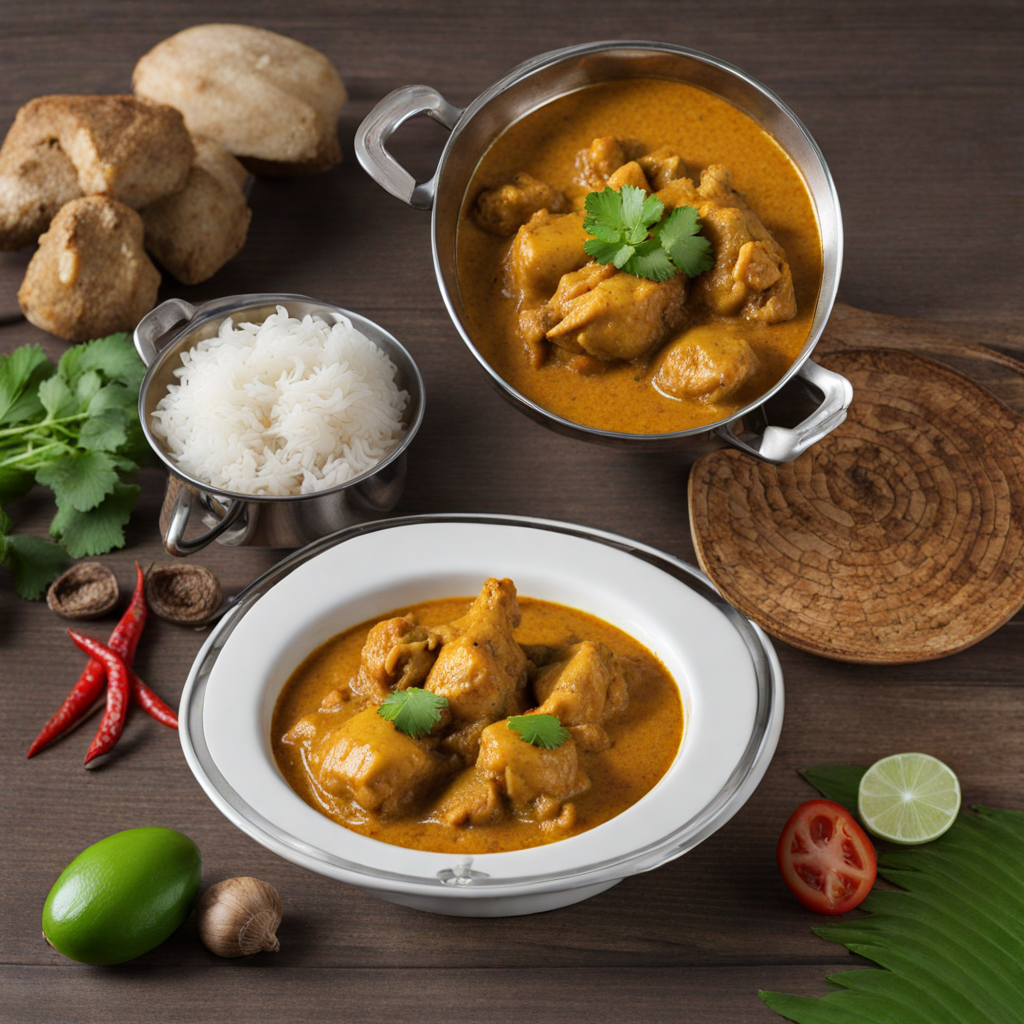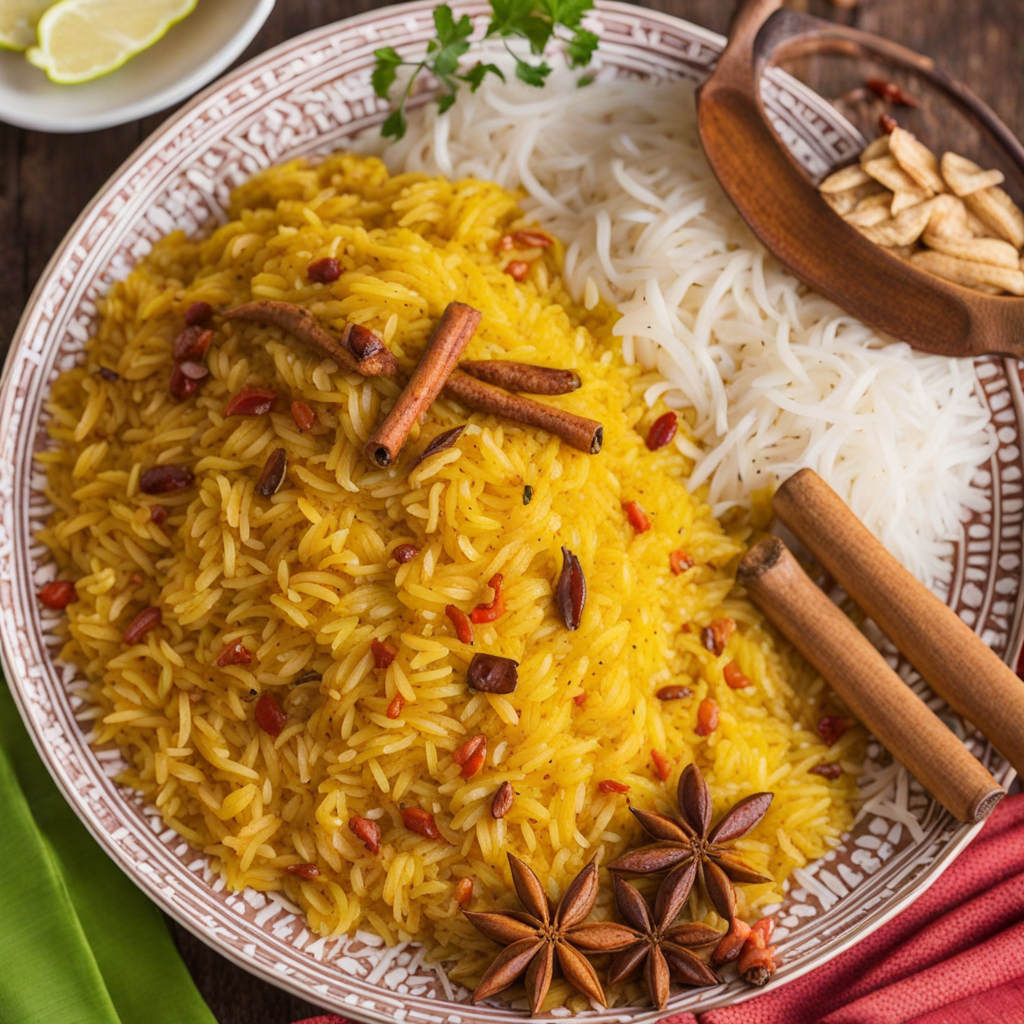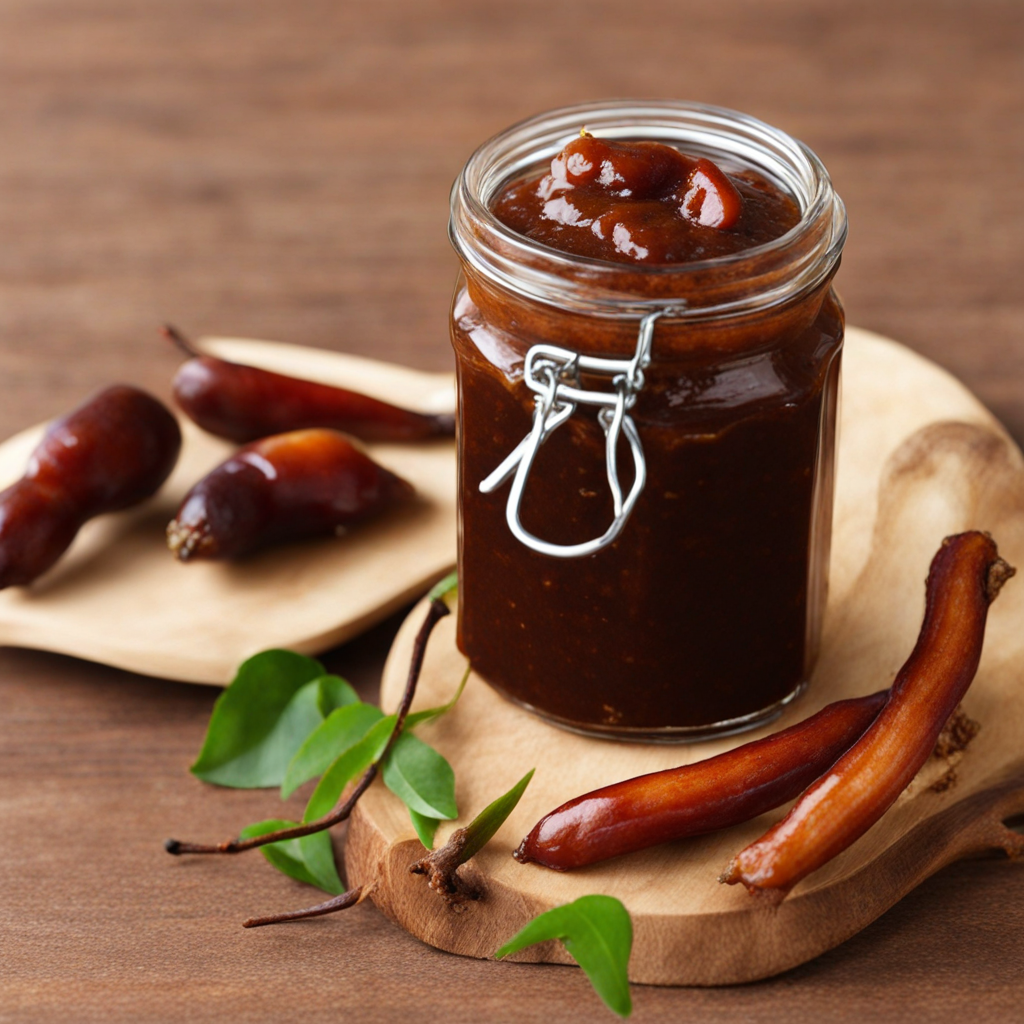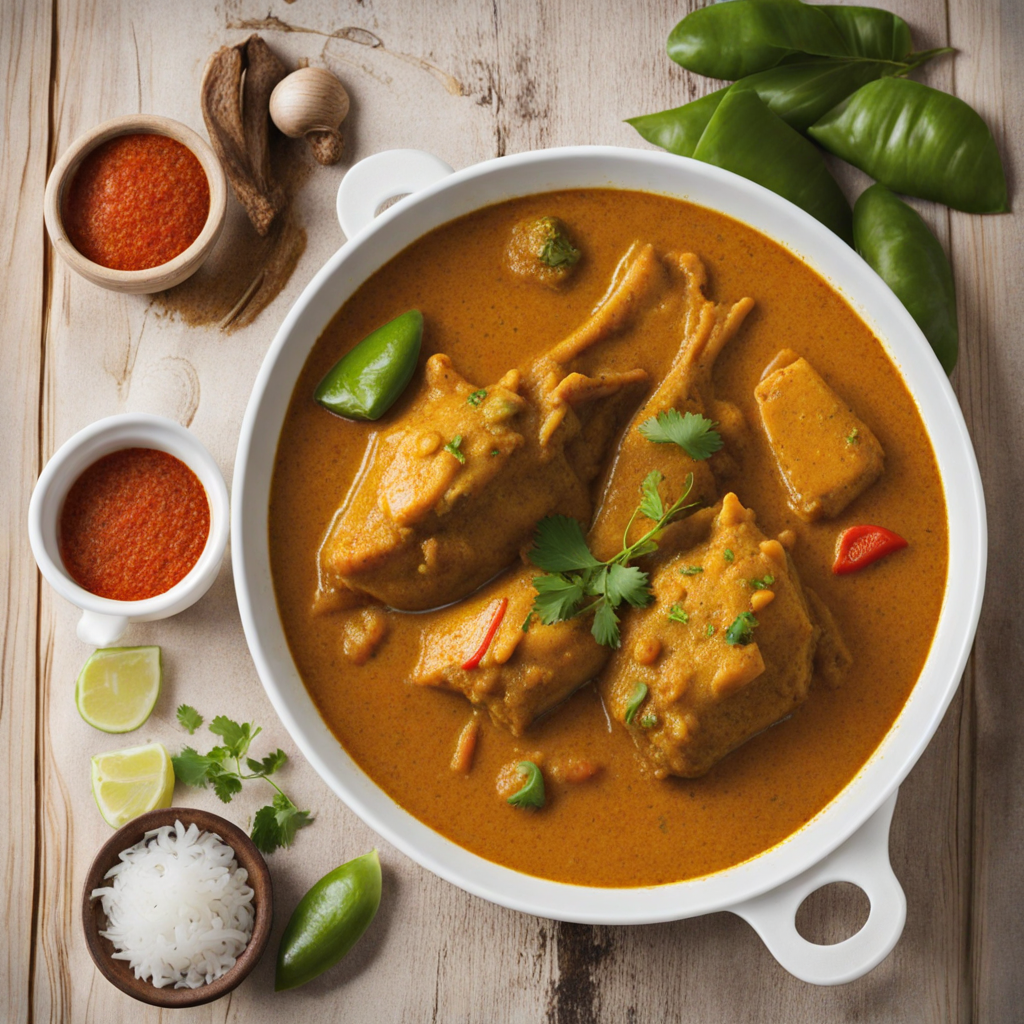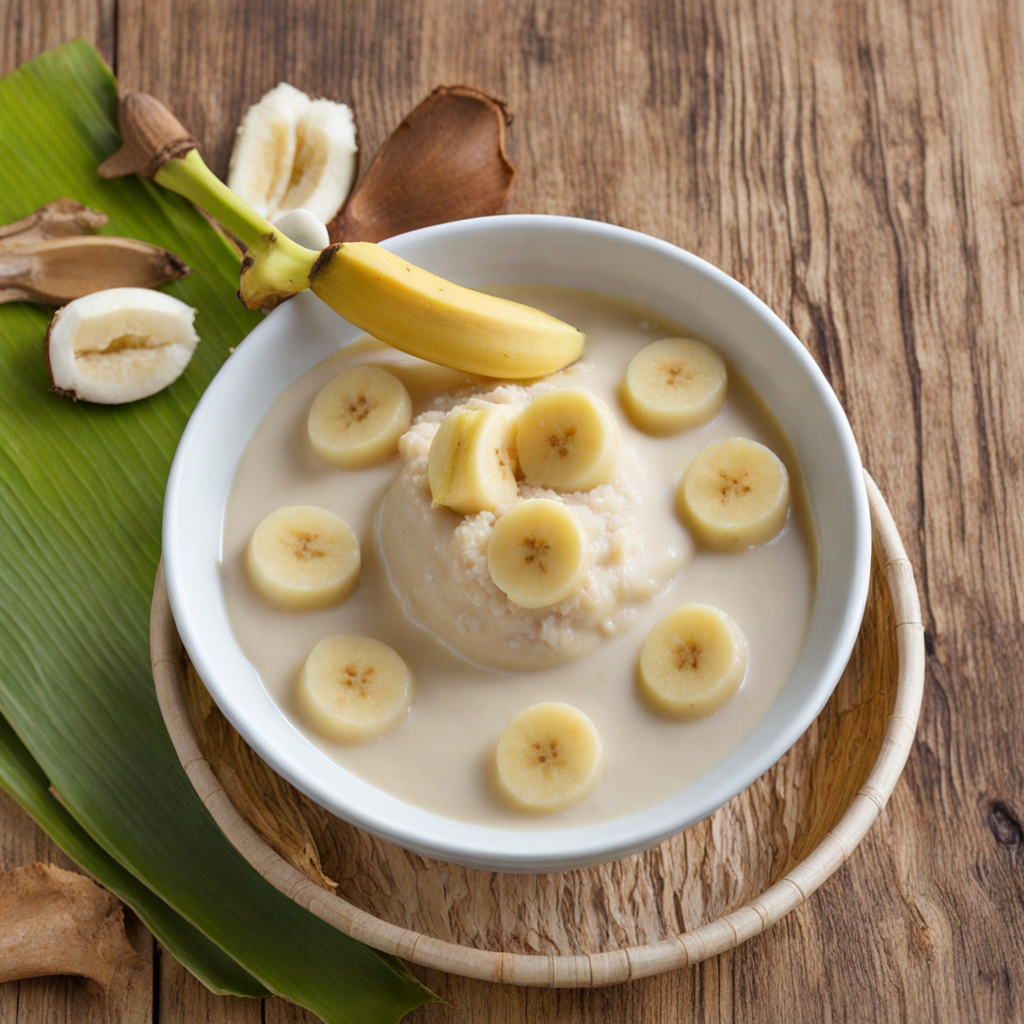Chicken Curry
Seychellois Chicken Curry is a vibrant and aromatic dish that showcases the unique flavors of the islands. The chicken is typically marinated in a blend of spices, including turmeric, ginger, garlic, and a hint of chili, which infuses the meat with a rich and complex flavor profile. The dish is often cooked in coconut milk, giving it a creamy and luscious texture that perfectly complements the spices. The use of fresh ingredients, such as tomatoes, onions, and local herbs, enhances the dish's natural flavors, making each bite a celebration of Seychellois cuisine. The island's diverse culinary influences, particularly from African, Indian, and French kitchens, contribute to the distinct taste of the Chicken Curry. Often served with fluffy basmati rice or a side of lentils, the curry is a comforting and satisfying meal that embodies the essence of island life. The balance of heat from the spices and the coolness of the coconut milk creates a harmonious blend that appeals to a wide range of palates, making it an inviting dish for both adventurous eaters and those seeking familiar comfort food. As you savor each mouthful, you'll discover the layers of flavor that build upon one another, from the initial warmth of the spices to the subtle sweetness of the coconut. The vibrant colors of the dish—golden yellow from the turmeric, bright red from the tomatoes, and green from the fresh herbs—make it as visually appealing as it is delicious. Enjoying Seychellois Chicken Curry is not just about the taste; it's an experience that transports you to the sun-kissed shores of the Seychelles, where food is a celebration of culture, history, and the bountiful ocean and land.
How It Became This Dish
The History of Kari Poul: A Culinary Gem of Seychelles #### Origins Kari Poul, a beloved dish of Seychelles, is a tantalizing representation of the archipelago's rich culinary heritage. The dish, which translates to "chicken curry" in Creole, is an embodiment of the fusion of diverse cultures that have influenced the islands over centuries. To understand Kari Poul's origins, one must delve into the historical tapestry of Seychelles, a nation that has served as a melting pot of various traditions and flavors. Seychelles, located in the Indian Ocean, was uninhabited until the late 18th century when French settlers arrived, bringing with them African slaves and Indian laborers. This influx introduced a myriad of spices, cooking techniques, and ingredients that would shape Seychellois cuisine. The French brought their love for rich sauces and aromatic herbs, while the Africans contributed ingredients such as cassava and plantains, and the Indians introduced an array of spices, including curry powder, which became integral to Kari Poul. The dish itself is rooted in the traditional practice of using locally available ingredients, combining chicken with coconut milk, onions, garlic, ginger, and a blend of spices that can vary from island to island. The use of curry powder, a staple in Indian cooking, reflects the deep-rooted connections between Seychelles and the Indian subcontinent, a relationship that has flourished through trade and migration. #### Cultural Significance Kari Poul is not just a meal; it holds a significant place in the cultural identity of Seychelles. It is often associated with family gatherings and celebrations, embodying the warmth and hospitality of Seychellois culture. The dish is commonly served during festive occasions, including weddings, Christmas, and traditional celebrations, symbolizing abundance and togetherness. In Seychellois households, cooking Kari Poul is a communal activity, often involving multiple generations coming together in the kitchen. The preparation of the dish can be a ceremonial affair, with each family passing down its own unique recipe, often infused with personal twists and stories. This generational transfer of knowledge and tradition underscores the importance of culinary heritage in the Seychellois community. Moreover, Kari Poul serves as a reflection of the islands' biodiversity. The ingredients used in the dish are often sourced from local markets, showcasing the islanders' connection to their land and sea. Freshly caught fish, locally grown vegetables, and herbs from home gardens contribute to a sustainable culinary practice that is integral to Seychellois identity. #### Development Over Time As Seychelles evolved, so did its cuisine. The late 20th century brought about significant changes in lifestyle and access to ingredients, which in turn influenced the way Kari Poul is prepared and served. The rise of tourism transformed the islands into a culinary destination, exposing visitors to the vibrant flavors of Seychellois cuisine. Chefs began experimenting with traditional recipes, incorporating international influences while still honoring the essence of Kari Poul. In recent years, the dish has gained popularity beyond Seychelles, finding its way into the menus of restaurants around the world. This globalization of Seychellois cuisine has led to a renewed interest in Kari Poul, allowing it to evolve while still retaining its traditional roots. Contemporary interpretations might include variations such as using different proteins, like seafood or tofu, catering to diverse dietary preferences. The rise of social media has also played a role in the dish's evolution. Food bloggers and influencers have showcased Kari Poul, highlighting its vibrant colors and aromatic appeal, making it a sought-after dish for those exploring the culinary landscapes of the Indian Ocean. This exposure has sparked interest among home cooks, inspiring them to recreate the dish in their kitchens, often adapting it to local ingredients and tastes. Despite these modern adaptations, authentic Kari Poul remains a staple in Seychellois households, revered for its comforting and hearty nature. The traditional preparation method, which involves slow-cooking the chicken in a sauce until tender, allows the flavors to meld beautifully, creating a dish that is both rich and complex. The use of coconut milk not only adds creaminess but also reflects the abundance of coconut palms that thrive in the tropical climate of Seychelles. #### The Future of Kari Poul Looking ahead, the future of Kari Poul seems promising. As the world becomes more interconnected, the dish is likely to continue evolving, influenced by global culinary trends while retaining its cultural significance. Preservation efforts by local chefs and cultural organizations aim to maintain traditional cooking methods and recipes, ensuring that Kari Poul remains a cherished part of Seychellois heritage. Additionally, with the growing emphasis on sustainability and locally sourced ingredients, Kari Poul exemplifies a dish that aligns with these values. The emphasis on fresh, locally grown produce not only supports the local economy but also promotes environmental stewardship, a crucial aspect of modern culinary practices. Educational initiatives in schools and community centers are also fostering a renewed interest in traditional Seychellois cuisine, encouraging younger generations to take pride in their culinary heritage. Workshops and cooking classes focusing on Kari Poul and other traditional dishes are helping to keep these culinary practices alive, ensuring that the flavors of Seychelles continue to be celebrated. #### Conclusion Kari Poul stands as a testament to the rich cultural heritage of Seychelles, encapsulating the islands' history, diversity, and communal spirit. From its origins as a simple chicken curry to its status as a symbol of celebration and family unity, the dish has evolved while remaining deeply rooted in tradition. As Seychelles navigates the complexities of globalization and modernity, Kari Poul will undoubtedly continue to be a source of pride and connection for its people, embodying the flavors and stories of this beautiful archipelago. The future of Kari Poul is bright, promising to remain a cherished dish that not only nourishes the body but also the soul, binding generations together through shared culinary experiences.
You may like
Discover local flavors from Seychelles


